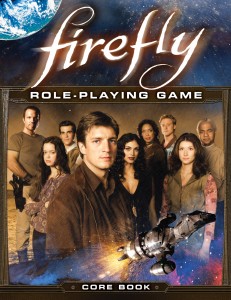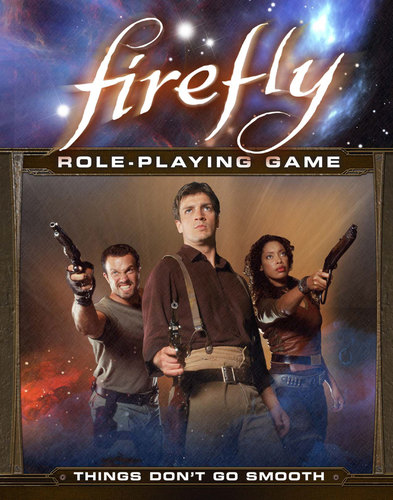GenCon Indy is less than a few weeks away, and that means its time to update you with my schedule! In the first of two posts, I’d like to share with you which of my books and games you can expect to find at GenCon. The books and games on this list are the titles I have confirmed that will be at the show–there may be others, but this is what you can expect to find. Most of them are fairly recent releases, too, and came out within the past two years.
The “G” in GenCon is gaming, so let’s start with those!
Margaret Weis Productions Booth 1613
At the MWP booth, the entire Firefly RPG line will be available for you to buy. That means, you can pick up a copy of the following:
- Firefly RPG corebook – Nominated and won multiple awards, plus it’s up for two ENnies this year.
- Echoes of War: Thrillin’ Heroics won an ENnie’s Judge’s Choice Award recently. If you’re looking to get into the game, but don’t want to make the investment for the corebook and the supplements, this is your best way to do that.
- Things Don’t Go Smooth is a GM-facing supplement that gives fans more Antagonists and tools to fine-tune your Firefly experience.
- Smuggler’s Guide to the Rim is for players and GMs. It introduces Reputation rules, iconic characters, and more!
- Ghosts in the Black is a campaign supplement designed by Robin D. Laws. This is the latest book in the line, and is filled with twists and turns.
Onyx Path Publishing Booth 1103
At the Onyx Path booth, four of the titles I’ve worked on will be available in print. They are:
- Hunter the Vigil: Mortal Remains – Explore the Vigil as it pertains to mummies, changelings, prometheans, demons, and sin-eaters.
- Vampire the Masquerade: Dread Names, Red List – Dread Names, Red List explores the Camarilla’s “Most Wanted” List, naming those deemed most dangerous by the Justicars and their chosen deputies, the Alastors.
- Gothic Icons – This was Onyx Path Publishing’s April Fool’s joke for 2015. However, so many people liked it the company kept it available for future customers. Enjoy!
- Geist Ready Made Characters – Ready-Made Player Characters (Geist: the Sin-Eaters) includes the Crossroads Drifters krewe, who perform for the living and the dead. Characters designed to for instant use in your Geist: the Sin-Eaters game.
Signing and Miscellany
Now onto the books! I will have a signing from 2:00 to 3:00 p.m. in the Author’s Alley area of GenCon. During this time, I’ve confirmed I’ll be bringing copies of:
- Haunted: 11 Tales of Ghostly Horror – This is an anthology about ghost hunting that I edited for FR Press. Fantastic authors like Alex Bledsoe and Jess Hartley are in here!
- Queen of Crows – Published early 2010, this is one of the first enhanced e-books to hit digital media. The story explores the gut-wrenching decision a shaman must make, once he realizes what dark future is approaching.
- Redwing’s Gambit – This is a novella about conspiracy and paranoia in the space-lanes. Redwing’s Gambit is set in the shared science-fiction universe of Bulldogs!
I may be bringing some other books, too, but right now I’m trying to keep the options limited for ease of carrying. There may be other books at the show, like Unframed: the Art of Improvisation for Gamemasters, Gods, Memes, and Monsters, and For Exposure: the Life and Times of a Small Press Publisher. Be sure to watch for them. I’d much rather spend my time signing books than selling them, so come say hello on Friday!


